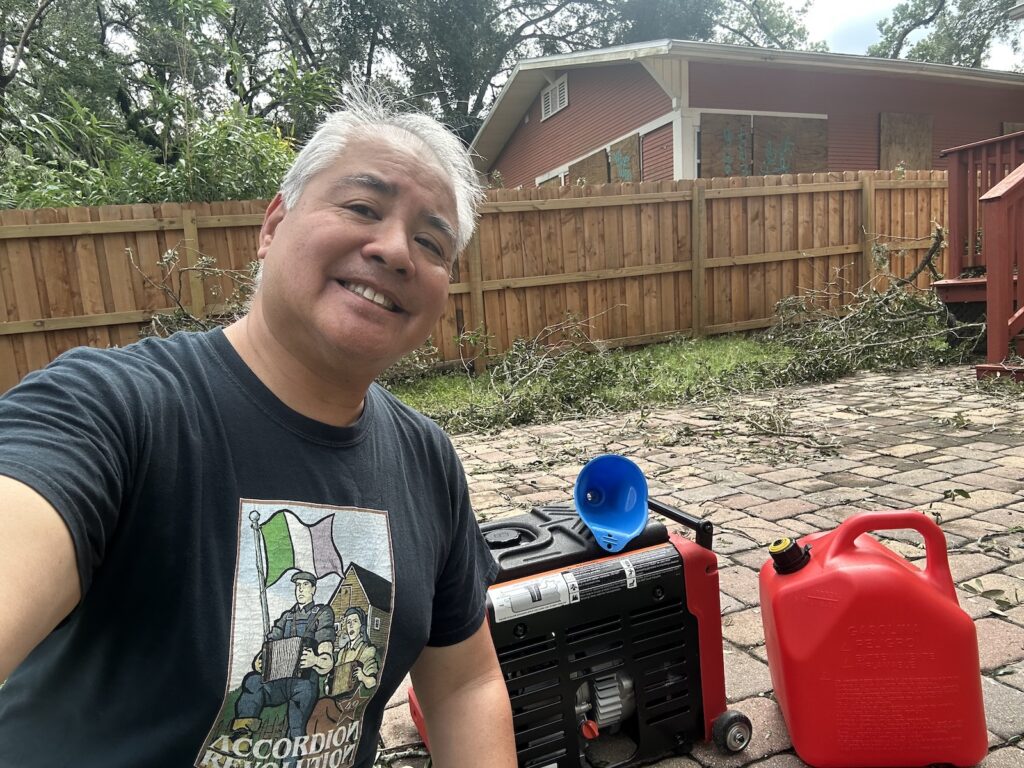The stillness and silence from earlier this morning in our Old Seminole Heights neighbourhood broke at around 8:30 when people started going out and about to assess the damage, walk their dogs, check in on their neighbors, and…fire up the generators.
Our plan is to eventually get a whole-house natural-gas powered generator, but for now, “Li’l Red,” whose primary purpose is to keep the fridge and freezer cold, is on active duty.
On a full tank of gas, Li’l Red can power the fridge/freezer, phones, and wifi for five hours, and it can also power our convection oven and lower-power backup microwave.
I always have 10 gallons (38 litres) of ethanol-free gasoline in canisters for emergencies, along with enough air conditioner-grade outdoor extension cords to run power to any part of the house from the generator outside.
This is Li’l Red’s first full-on use, and so far, she’s been performing admirably.










